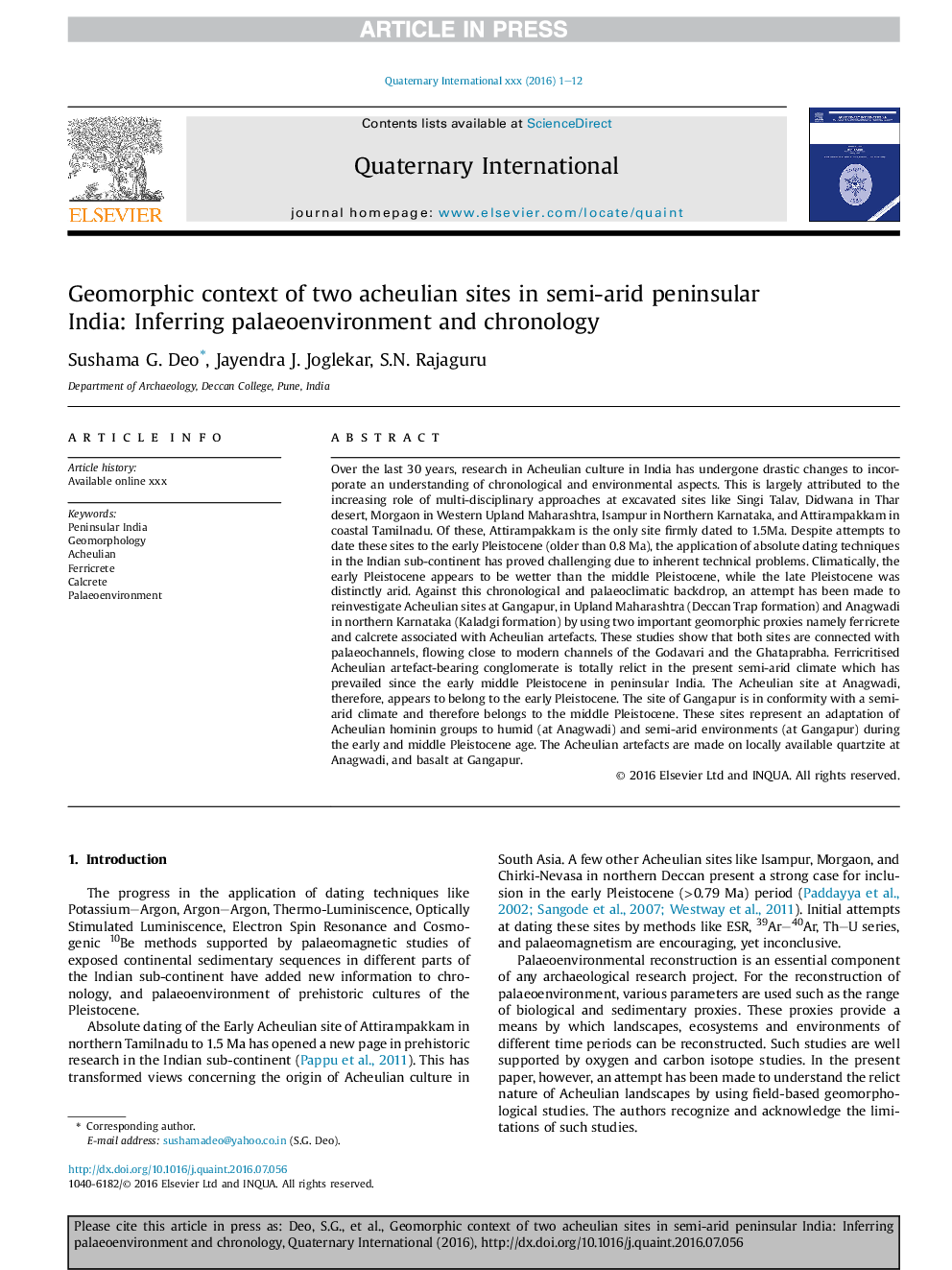| کد مقاله | کد نشریه | سال انتشار | مقاله انگلیسی | نسخه تمام متن |
|---|---|---|---|---|
| 7449389 | 1484031 | 2018 | 12 صفحه PDF | دانلود رایگان |
عنوان انگلیسی مقاله ISI
Geomorphic context of two acheulian sites in semi-arid peninsular India: Inferring palaeoenvironment and chronology
ترجمه فارسی عنوان
زمینه ژئومورفیک دو سایت آخولی در هندوستان نیمه خشخاش: محاسبه محیط زیست و زمانبندی
دانلود مقاله + سفارش ترجمه
دانلود مقاله ISI انگلیسی
رایگان برای ایرانیان
کلمات کلیدی
موضوعات مرتبط
مهندسی و علوم پایه
علوم زمین و سیارات
زمین شناسی
چکیده انگلیسی
Over the last 30 years, research in Acheulian culture in India has undergone drastic changes to incorporate an understanding of chronological and environmental aspects. This is largely attributed to the increasing role of multi-disciplinary approaches at excavated sites like Singi Talav, Didwana in Thar desert, Morgaon in Western Upland Maharashtra, Isampur in Northern Karnataka, and Attirampakkam in coastal Tamilnadu. Of these, Attirampakkam is the only site firmly dated to 1.5Ma. Despite attempts to date these sites to the early Pleistocene (older than 0.8Â Ma), the application of absolute dating techniques in the Indian sub-continent has proved challenging due to inherent technical problems. Climatically, the early Pleistocene appears to be wetter than the middle Pleistocene, while the late Pleistocene was distinctly arid. Against this chronological and palaeoclimatic backdrop, an attempt has been made to reinvestigate Acheulian sites at Gangapur, in Upland Maharashtra (Deccan Trap formation) and Anagwadi in northern Karnataka (Kaladgi formation) by using two important geomorphic proxies namely ferricrete and calcrete associated with Acheulian artefacts. These studies show that both sites are connected with palaeochannels, flowing close to modern channels of the Godavari and the Ghataprabha. Ferricritised Acheulian artefact-bearing conglomerate is totally relict in the present semi-arid climate which has prevailed since the early middle Pleistocene in peninsular India. The Acheulian site at Anagwadi, therefore, appears to belong to the early Pleistocene. The site of Gangapur is in conformity with a semi-arid climate and therefore belongs to the middle Pleistocene. These sites represent an adaptation of Acheulian hominin groups to humid (at Anagwadi) and semi-arid environments (at Gangapur) during the early and middle Pleistocene age. The Acheulian artefacts are made on locally available quartzite at Anagwadi, and basalt at Gangapur.
ناشر
Database: Elsevier - ScienceDirect (ساینس دایرکت)
Journal: Quaternary International - Volume 480, 30 June 2018, Pages 166-177
Journal: Quaternary International - Volume 480, 30 June 2018, Pages 166-177
نویسندگان
Sushama G. Deo, Jayendra J. Joglekar, S.N. Rajaguru,
